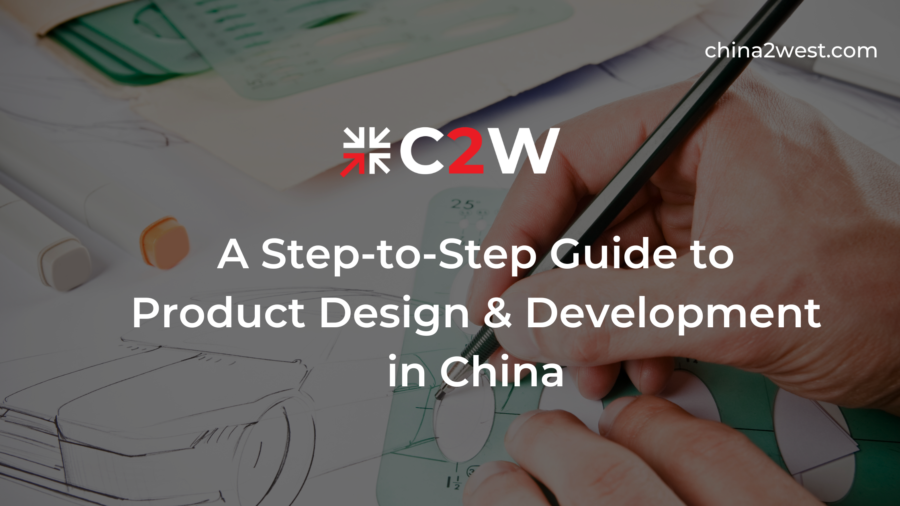China’s reputation for innovation and manufacturing prowess extends far beyond its borders, making it an attractive destination for businesses looking to design and develop consumer goods for Western markets.
With its robust research and development (R&D) ecosystem, cutting-edge technology infrastructure, and cost-effective manufacturing capabilities, China offers a wealth of opportunities for businesses seeking to bring their products to market.
In this comprehensive guide, we will explore the steps involved in product design and development in China, focusing on harnessing the country’s R&D strengths while navigating the complexities of cross-border manufacturing and distribution.
Harnessing Chinese R&D Prowess
China’s emergence as a global R&D powerhouse has been fueled by significant investments in science, technology, and innovation.
Leveraging the country’s R&D strengths can provide businesses with access to cutting-edge technologies, talent, and resources to drive product innovation and differentiation.
Research and Innovation Ecosystem
China boasts a vibrant ecosystem of research institutions, universities, and technology parks dedicated to fostering innovation across various industries.
Collaborating with Chinese research institutions and academic partners can provide businesses with access to world-class expertise and facilities, enabling them to tap into emerging technologies and trends.
Technology Transfer and Collaboration
China’s government-led initiatives aimed at promoting technology transfer and collaboration have facilitated partnerships between domestic and international companies.
Engaging in collaborative R&D projects with Chinese partners can accelerate product development timelines and enhance technological capabilities, allowing businesses to stay ahead of the curve in competitive markets.
Identifying Design Requirements and Objectives
Before embarking on the product design and development journey, it’s essential to define clear objectives and requirements that align with Western consumer preferences and market demands.
Understanding the target market’s needs, preferences, and regulatory requirements is paramount for designing products that resonate with Western consumers.
Market Research and Consumer Insights
Conducting comprehensive market research and gathering consumer insights are critical steps in identifying design requirements and objectives.
Analyzing market trends, competitor offerings, and consumer feedback provides valuable insights into product positioning, features, and design aesthetics tailored to Western markets.
Design Thinking and User-Centric Design
Embracing design thinking principles and adopting a user-centric approach to product design can enhance the overall user experience and drive customer satisfaction.
Engaging with end-users through focus groups, surveys, and usability testing enables businesses to iteratively refine their designs based on real-world feedback and user preferences.
Leveraging Prototyping and Testing
Prototyping and testing are essential stages in the product development process, allowing businesses to validate concepts, identify potential issues, and optimize designs for manufacturability and performance.
In China, rapid prototyping technologies and advanced manufacturing capabilities offer businesses the flexibility to iterate quickly and efficiently.
Rapid Prototyping Technologies
China’s advanced manufacturing infrastructure supports a wide range of rapid prototyping technologies, including 3D printing, CNC machining, and injection molding.
Leveraging these technologies enables businesses to produce high-fidelity prototypes with fast turnaround times, facilitating iterative design improvements and reducing time to market.
Comprehensive Testing and Validation
Conducting thorough testing and validation is crucial for ensuring product quality, reliability, and compliance with regulatory standards.
From functional testing to durability testing and regulatory compliance testing, businesses must rigorously evaluate their prototypes to identify any design flaws or performance issues early in the development process.
Partnering with Manufacturers
Selecting the right manufacturing partner is key to successfully bringing your product to market.
In China, businesses have access to a vast network of manufacturers offering diverse production capabilities, cost-effective pricing, and stringent quality control processes.
Supplier Evaluation and Selection
Carefully evaluating potential manufacturing partners based on criteria such as production capabilities, quality control standards, pricing, and lead times is essential for making informed decisions.
Visiting manufacturing facilities, conducting due diligence, and seeking recommendations from industry peers can help businesses identify reputable and reliable partners.
Collaborative Supplier Relationships
Building strong, collaborative relationships with manufacturing partners based on trust, communication, and transparency is crucial for ensuring seamless production and timely delivery of high-quality products.
Establishing clear expectations, maintaining open lines of communication, and fostering mutual respect can help businesses navigate challenges and build long-term partnerships.
Managing Supply Chain and Logistics
Efficient supply chain management is essential for optimizing production processes, minimizing costs, and ensuring on-time delivery of products to Western markets.
Leveraging digital technologies and adopting best practices in supply chain logistics can help businesses streamline operations and mitigate risks.
Inventory Management and Demand Forecasting
Implementing robust inventory management systems and demand forecasting tools enables businesses to optimize inventory levels, reduce stockouts, and minimize excess inventory costs.
By accurately forecasting demand and aligning production schedules with market demand, businesses can improve efficiency and responsiveness in their supply chains.
Logistics Optimization and Risk Mitigation
Proactively managing logistics operations and mitigating risks is critical for maintaining supply chain resilience and continuity.
Diversifying transportation modes, optimizing shipping routes, and implementing contingency plans for potential disruptions can help businesses mitigate risks such as port congestion, geopolitical tensions, and natural disasters that may impact the flow of goods.
Navigating the product design and development process in China requires strategic planning, collaboration, and execution. With the right approach, China offers unparalleled opportunities for businesses looking to design and develop cutting-edge consumer goods for global audiences. Working with a manufacturer like C2W, with an in-house international team of R&D and vast supplier network, you can take full advantage of what China product development offers. Contact us now!


